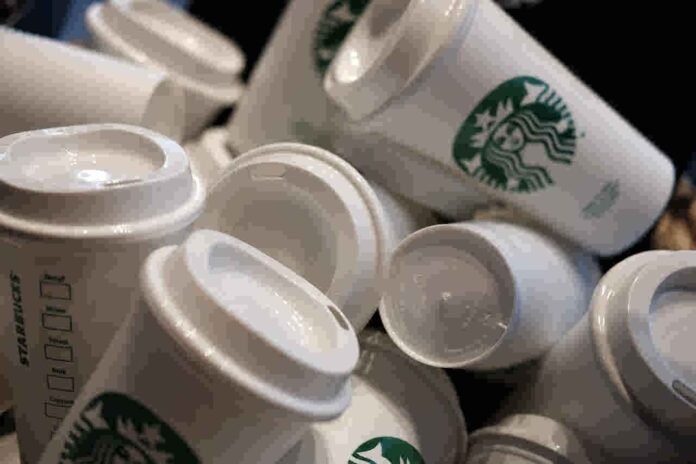When someone says the word “pappedeckel cardboard,” your mind probably jumps to packing boxes, shipping materials, or the pile of recycling sitting in the corner after a move. It’s rarely associated with style, elegance, or fashion. But in recent years, something remarkable has been happening in the worlds of design, art, and even couture — cardboard, specifically Pappedeckel, is stepping onto center stage.
At first glance, the concept may sound unusual, maybe even a little humorous. How could something so humble and utilitarian become a material for style icons, home decorators, or event planners? Yet, in a time where sustainability, innovation, and individuality are reshaping how we define beauty, cardboard has emerged as an unlikely star.
What is Pappedeckel?
The Origins and Meaning of the Term “Pappedeckel”
The word “Pappedeckel” is German, made up of two parts: Pappe (cardboard) and Deckel (lid or cover). Literally, it refers to a cardboard lid — something you’d see sealing a box, protecting fragile goods, or closing up a bookbinding case. In German-speaking countries, it’s a common household term, but in design circles, the word has started to carry a more creative and stylish connotation. What used to mean “just a lid” is now associated with a whole movement of creative reuse, artistic expression, and sustainable innovation.
The “Pappedeckel movement” isn’t just a quirky design fad. It’s part of a broader cultural shift toward valuing raw materials, handmade craftsmanship, and environmental responsibility. In other words, style is no longer limited to shiny, mass-produced, and resource-heavy creations. Today, people want story-driven style — pieces that have meaning, history, and a lighter footprint on the planet.
And this is exactly where Pappedeckel shines.
Traditional Uses in Packaging, Crafts, and Everyday Life
Historically, Pappedeckel had one job: to protect and contain. It was used in:
Bookbinding as a stiff cover
Board games as the rigid backing for game boards
Notepads and sketchbooks for firm backing
Lids for boxes, storage containers, and shipping crates
Protective covers for delicate or breakable goods during transport
For decades, it stayed in this practical role — valued for durability and low cost, but never considered glamorous.
From Functional to Fashionable
The turning point came with the rise of eco-friendly design trends. People began rethinking “waste materials” and exploring their creative potential. Pappedeckel’s neutral color palette, firm structure, and adaptability made it an appealing canvas for artists, crafters, and designers.
Soon, it started appearing in unexpected places — as handbags on runways, sculptural furniture in chic loft apartments, and decorative displays in boutique stores.
How Cardboard Can Boost Your Look
Minimalist Chic
Minimalism is all about stripping away the unnecessary and celebrating clean lines and natural tones. Pappedeckel fits perfectly into this aesthetic. Its earthy beige and muted brown shades can be both warm and sophisticated.
Imagine a neutral-toned living room with a set of perfectly cut cardboard wall art panels — simple, geometric, and understated. Or think of a plain white outfit accessorized with a Pappedeckel clutch featuring subtle embossed patterns.
By using cardboard as an accent rather than the entire design, you get an elegant, eco-conscious style without overwhelming the senses.
Cardboard Couture
High fashion has always thrived on pushing boundaries, and cardboard couture is a perfect example. Designers have created jaw-dropping runway pieces using layers of cut, folded, and sculpted cardboard.
In the world of wearable art, it’s not uncommon to see:
Structured dresses that look like origami
Oversized hats made from corrugated sheets
Futuristic shoulder pieces crafted from laminated Pappedeckel
These creations may not be for everyday wear, but they influence mainstream trends by showing what’s possible when imagination meets unconventional materials.
Mixing Cardboard with Other Materials
The real magic often happens when Pappedeckel is combined with other materials:
Leather straps on cardboard handbags
Brass handles on cardboard storage boxes
Linen lining inside cardboard clutches
Wooden frames supporting cardboard shelving
This mix of textures creates visual interest and transforms cardboard from “just packaging” into a conversation-worthy design element.
Eco-Conscious Styling
Using cardboard sends a subtle but powerful message: style can be responsible. It aligns with the values of today’s conscious consumers who want to look good while also doing good.
When you incorporate Pappedeckel into your style — whether through accessories, furniture, or décor — you’re telling the world that you value creativity, sustainability, and individuality.
Creative Ways to Use Pappedeckel in Style and Décor
Fashion Accessories
Some of the most striking Pappedeckel creations are wearable. Designers and DIY enthusiasts have made:
Necklaces and chokers: Laser-cut cardboard shapes, painted or varnished for durability
Clutches and handbags: Structured, lightweight, and surprisingly chic
Earrings: Minimalist geometric designs that weigh next to nothing
Belts: Wide, statement belts with embossed or printed cardboard panels
Home Styling
Cardboard in interior design might sound risky, but when treated and sealed properly, it’s both functional and beautiful:
Shelving: Honeycomb cardboard structures strong enough to hold books
Wall décor: Layered cardboard panels creating a 3D effect
Lampshades: Filtered light through intricate cut-outs
Room dividers: Foldable panels with patterned cutwork
Event Décor
For events, Pappedeckel is a game-changer because it’s affordable, customizable, and eco-friendly:
Wedding décor: Table numbers, menu holders, and centerpieces
Corporate events: Brand signage and display stands
Photo booths: Props and backdrops made entirely from cardboard
Temporary installations: Pop-up walls, arches, or sculpture displays
Upcycled Designs
Upcycling is where Pappedeckel truly shines:
Old packaging turned into storage boxes
Discarded lids repurposed as wall art
Layered cardboard as eco-friendly gift packaging
Upcycled designs often carry a unique charm because they retain a bit of their original history.
Sustainability and Ethical Style
Why Cardboard is a Champion of Eco-Friendly Materials
Cardboard is one of the most recycled materials in the world. It’s biodegradable, renewable, and often made from post-consumer waste. Pappedeckel in particular is sturdy enough to be reused multiple times before needing to be recycled.
Reducing Waste Through Stylish Reuse
Every time Pappedeckel is reused in a design, it diverts material from landfills. In fashion and décor, this translates to less reliance on resource-intensive materials like plastic, metal, or virgin wood.
How Pappedeckel Projects Inspire Mindful Consumption
The act of creating something beautiful from cardboard can change how people view consumption. Instead of automatically buying something new, they might look around and ask, “What can I make from what I already have?”
The Growing Trend of Sustainable Style
Major brands are adopting sustainable packaging and even releasing limited collections of eco-friendly accessories. The visibility of cardboard as a stylish material is growing, and with it, the market for creative, ethical products.
Tips for Working with Cardboard Like a Pro
Choosing the Right Type and Thickness
Not all cardboard is created equal. For wearable items, lightweight yet dense cardboard is best. For furniture or large décor, thick corrugated Pappedeckel provides strength.
Essential Tools and Materials
You’ll need:
Precision knife or box cutter
Self-healing cutting mat
Metal ruler for straight edges
High-quality glue or adhesives
Sealants for protection against moisture
Techniques to Make Cardboard Look High-End
Sanding edges to remove roughness
Painting or staining to change color while preserving texture
Laminating with fabric, paper, or thin wood veneer for durability
How to Protect and Preserve Your Cardboard Creations
Apply clear sealant or varnish
Store in dry, cool places
Avoid prolonged exposure to direct sunlight
Real-Life Examples and Inspiration
Designers and Brands Embracing Cardboard
Some high-fashion designers have showcased cardboard garments in runway shows. Eco-conscious brands are using Pappedeckel for packaging that doubles as reusable storage.
DIY Creators Turning Pappedeckel into Art and Fashion
From YouTube tutorials to Instagram reels, creators are proving cardboard’s versatility. They’re making everything from wallets to elaborate festival costumes.
Stunning Transformations
Before-and-after photos of cardboard projects are some of the most inspiring — watching an old, worn shipping box turn into a designer lamp or luxury gift box never gets old.
Conclusion
Pappedeckel proves that style doesn’t always come from expensive fabrics or rare materials. Sometimes, it comes from the simplest things — materials we touch every day but rarely see as beautiful.
When we embrace Pappedeckel, we embrace more than a design choice. We embrace creativity, sustainability, and the power of transformation. Whether it’s a chic clutch, a modern coffee table, or an event centerpiece, cardboard can indeed boost your style — if you let it.

